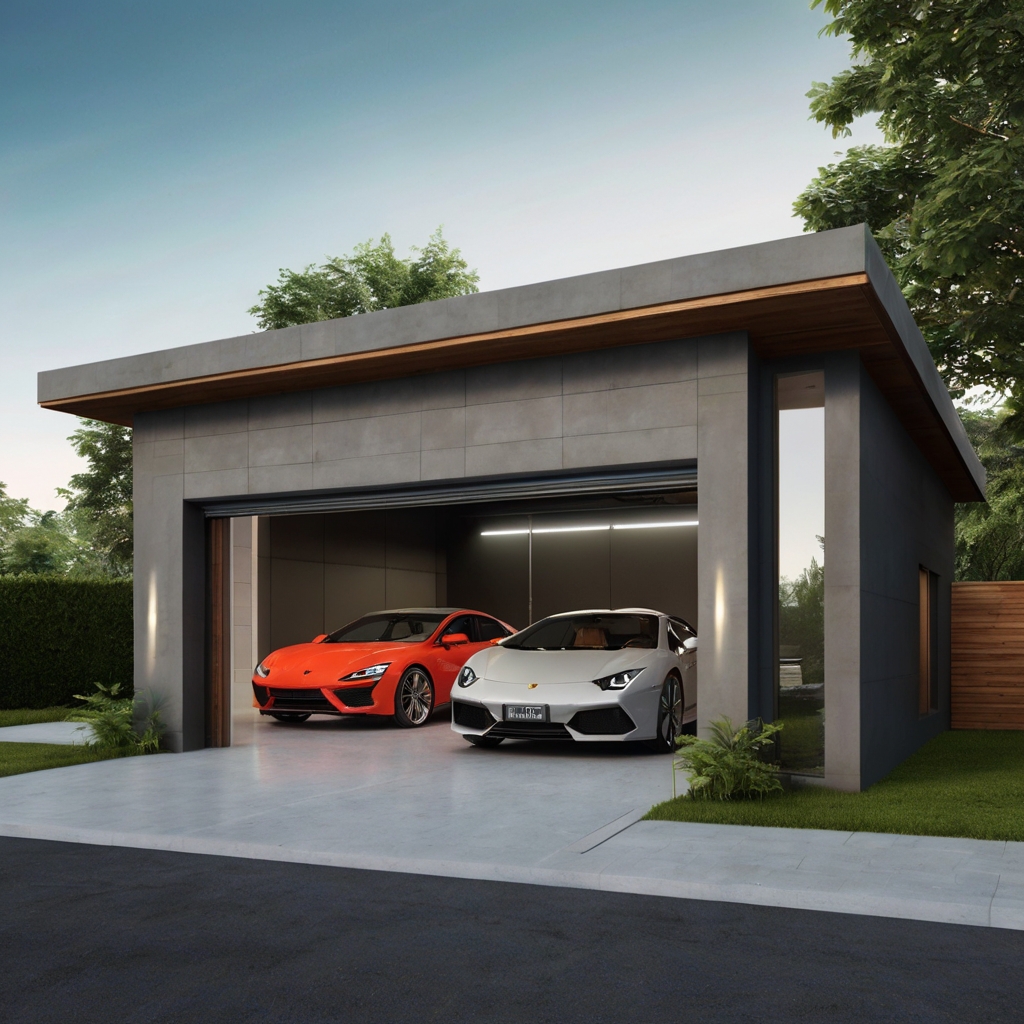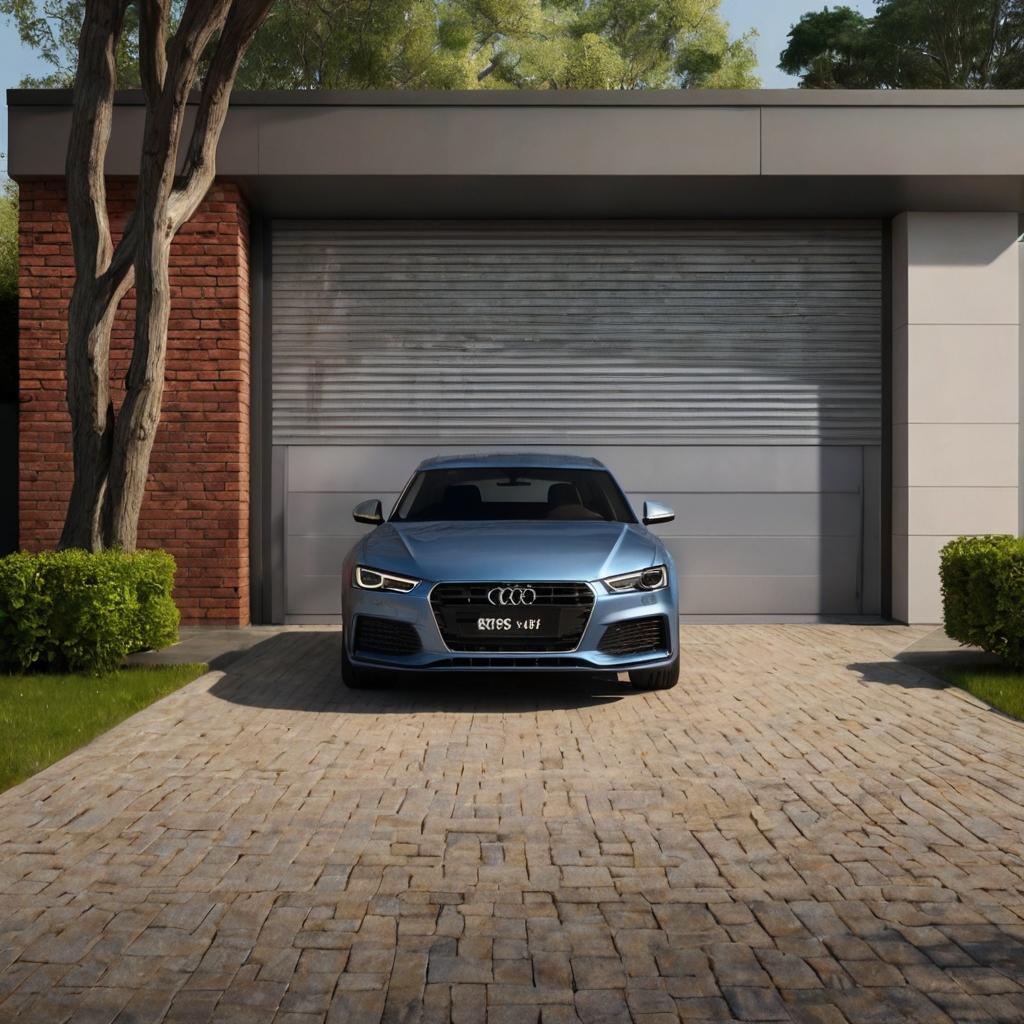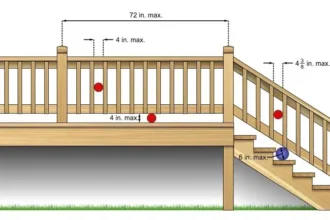3 Car Garage Dimensions

Homeowners often underestimate how much 3 car garage dimensions can vary. Expert builders confirm that three-car garage sizes range from 20’×30′ to an expansive 30’×60′. Anyone planning a new build or renovation should carefully evaluate these size differences.
Most three-car garages measure 32 feet wide by 22 feet deep, though builders prefer 36×24 feet as an ideal size. Professional recommendations suggest widths between 31 to 36 feet and depths of 20 to 24 feet. Your three-car garage will need 864-1296 square feet of space to function well.
Building codes might limit your garage size options, even though bigger spaces offer more flexibility. The International Residential Code (IRC) 2018 caps garage sizes at 1,000 square feet. This piece reveals essential details about 3 car garage dimensions that builders rarely discuss upfront, from basic requirements to optimal layouts.

Table of Contents
- 1 Understanding Standard 3 Car Garage Dimensions
- 2 How Vehicle Size Impacts Garage Planning
- 3 Beyond Parking: Planning for Storage and Functionality
- 4 Garage Door and Access Considerations
- 5 What Builders Don’t Tell You About Long-Term Planning
- 6 Summing all up
- 7 Here are some FAQs about 3 car garage dimensions:
- 7.1 What is a standard 3 car garage size?
- 7.2 How much room do you need for a 3 car garage?
- 7.3 Is 30 ft wide enough for a 3 car garage?
- 7.4 How big is a 3 car garage driveway?
- 7.5 What is the most cost effective garage size?
- 7.6 What size is a 3 car garage door?
- 7.7 What does a 3 car garage look like?
- 7.8 What size mini split for 3 car garage?
Understanding Standard 3 Car Garage Dimensions
Smart planning makes all the difference when building a three-car garage. You need the right spatial dimensions to create a functional space that works well for years. The perfect measurements can transform a tight parking spot into a versatile area that serves multiple purposes.
Minimum 3 car garage dimensions in feet
The smallest footprint for a 3-car garage starts at 20′ × 30′. This compact size might be enough for families with very small vehicles or limited land space. Most builders suggest going no smaller than 24′ × 36′ to create a truly functional three-car garage.
Small spaces can make it tough to move between vehicles. Each car needs at least eight feet of width, which makes 24 feet the baseline width for a three-car garage. The depth should be at least 20 feet to fit standard vehicles, but this leaves little space to store items or walk around cars.
Local building codes set minimum dimensions for residential garages. Smart homeowners check these rules before finalizing plans to avoid getting pricey revisions later. Future vehicle purchases should also shape your minimum size requirements.
Average 3 car garage dimensions and square footage
A typical three-car garage measures about 864 square feet, spanning 24 feet wide by 36 feet long with 8 or 9-foot ceilings. Many builders call 32 feet wide by 22 feet deep (32′ × 22′) the standard size, while 36′ × 24′ offers an ideal setup.
Square footage usually ranges from 864-1296 square feet. This range exists because some people want all cars parked side-by-side, while others prefer tandem parking with cars lined up behind each other.
Popular sizes for detached three-car garages include:
- 32′ × 24′ (768 sq ft)
- 34′ × 24′ (816 sq ft)
- 36′ × 28′ (1,008 sq ft)
Your choice often depends on storage needs, space for a workbench, or plans to convert the garage into living space later.
Maximum size and when it makes sense
Large three-car garages can reach 30′ × 60′, creating a massive 1,800 square feet of space. These bigger garages work great for homeowners with larger vehicles like pickup trucks, SUVs, or RVs that need extra room.
On top of that, it makes sense to go bigger when you plan to:
- Store multiple large vehicles (trucks, SUVs)
- Create multi-purpose spaces (workshops, home gyms)
- Convert to living space later
- Keep specialized equipment or hobby gear
Building codes might limit your garage size. The International Residential Code (IRC) 2018 says no garage can be larger than 1,000 square feet. You should check with local building authorities before planning an extra-large garage.
Larger garages need more materials, but here’s an interesting fact – the cost per square foot drops as size increases. A 40′ × 70′ garage costs less per square foot than a 30′ × 40′ structure, which could make bigger dimensions more cost-effective long-term.

How Vehicle Size Impacts Garage Planning
Vehicle dimensions are the life-blood of garage planning. Unlike standard housing blueprints, 3 car garage dimensions need customization based on the vehicles they’ll shelter. This makes careful measurement vital for long-term satisfaction.
Measuring your vehicles before choosing dimensions
You need to know exactly how many vehicles you’ll store. This basic step seems obvious but people often skip it. Yet it forms the foundation for all future planning decisions. Once you know the vehicle count, exact measurements become vital.
The best approach is to measure each vehicle’s length and width yourself instead of trusting manufacturer specifications. This helps account for any add-ons or accessories that might stick out beyond standard sizes. Here’s what you should know:
- Small/compact cars average 14 feet long and 5.5 feet wide
- Mid-size sedans typically measure 15.5 feet long and 6 feet wide
- Full-size trucks extend beyond 17 feet long and 6.5 feet wide
Make sure to measure width with mirrors extended and think about the turning radius of bigger vehicles. A full-size car, minivan, or SUV ranges from 14 to 17 feet in length and needs at least 6 feet in width. This often means your garage depth should be 24 feet or more.
Clearance space between cars and walls
The space between vehicles makes the difference between a useful garage and a daily headache. Standard guidelines suggest at least two feet of space in front of and behind your longest vehicle, between each vehicle, and between vehicles and walls. Extra space can boost comfort and usability even more.
A width of 36 feet works best to fit three vehicles side-by-side. This gives you room to open doors without scratches and move around easily. Many builders overlook door clearance and entry/exit space during the original planning phase.
Side clearance becomes extra important when you’re dealing with kids, groceries, or equipment that needs more space. The recommended garage widths let you open car doors without damaging paint or hitting walls.
Accommodating trucks, SUVs, and future upgrades
Vehicle length varies more than width, so garage depth needs special attention – especially for larger vehicles. If you have pickup trucks, SUVs, or plan to get them, experts recommend a minimum depth of 26 feet. This covers both the vehicles and the space you need in front and back.
Smart planning looks beyond your current needs. Think about what vehicles you might buy in the future. The biggest vehicle you could reasonably own should guide your garage dimensions today.
Specialized vehicles like ATVs, jet skis, or small boats need extra planning. These take up lots of floor space beyond regular vehicles and need room to maneuver. Deeper and taller bays can handle oversized vehicles, and some designs even work for boat storage.
A well-sized garage avoids future changes and adds to your property value. The minimum width per car is eight feet, so smaller garages might only fit compact vehicles. This could limit your future vehicle choices. Good planning eliminates these issues and ensures your 3 car garage dimensions stay practical throughout ownership.
Beyond Parking: Planning for Storage and Functionality
A 3-car garage becomes truly valuable when you use it for more than just parking cars. Smart planning can turn these big spaces into workshops, storage areas, and fun spaces.
Shelving, workbenches, and tool zones
Smart layouts make a 3-car garage work better. Most people park two cars and turn the third space into storage or a workshop without cramping. Wall-mounted storage beats standalone units because it uses vertical space well.
You can stack wall-mounted shelves as high as you need, unlike floor units. Metal shelving units work great for concrete block walls or rental properties. These units won’t warp and hold more weight than plastic ones.
Cabinets are the best way to store tools. They protect tools from dust and moisture better than open shelves, plus you can lock them up. A solid workbench is the heart of any garage workshop. Small garages benefit from pulldown workbenches that fold away after use.
Overhead storage and ceiling height considerations
Most people miss out on the storage gold mine above their heads. Overhead systems turn unused ceiling space into perfect spots for seasonal items, patio furniture, and sports gear. Good quality racks can hold up to 600 pounds if installed right.
Your garage ceiling should be 10-12 feet high. This gives room for taller vehicles and plenty of overhead storage. The extra height lets you add ceiling nets for light decorations or heavy-duty drop-down systems.
The overhead area works best for stuff you only grab a few times a year, like holiday decorations or camping equipment. Keep clothes and fabrics somewhere else – garage moisture and temperature changes can ruin them. Clear labels on storage bins save time when you search for items.
Multi-use areas: gym, hobby space, or office
A 3-car garage gives you room to create special activity zones beyond parking. One bay can become your personal gym with the right flooring, air flow, and storage. This setup saves gym trips and keeps exercise gear tidy.
Slatwall panels help home gyms by storing accessories in baskets and bins up high. Sturdy cabinets hide supplements and small equipment to keep things looking neat. Some owners choose high-lift garage doors that open near the ceiling to make room for overhead exercises.
That third bay could become your dream workshop for woodworking, car repairs, or DIY projects. You’ll have space for all your tools without constant reshuffling. With good insulation, ventilation, and ceiling fans, the area can even serve as a year-round guest room or home office.
Garage Door and Access Considerations
The right access points are just as significant as the overall 3 car garage dimensions when you plan your build. Your choice of door configuration will affect daily convenience, structural requirements, and your garage’s esthetic appeal.
Standard garage door sizes for 3 car garages
Single garage doors typically measure 8 to 9 feet wide by 7 to 8 feet high. These standard dimensions fit average-sized vehicles while maintaining structural integrity. Double garage doors usually stretch to 16 feet in width with the same 7 to 8-foot height. Custom doors that reach 10 feet or higher are available if you have oversized vehicles or ones with roof racks.
Triple garage door designs maintain consistent height, but width options show considerable variation. You’ll find triple-car garage doors ranging from 20 to 32 feet wide, based on configuration. These measurements specifically refer to the door opening, not the interior dimensions.
Single vs multiple door configurations
You have three main options for 3-car garage door arrangements:
- Three separate single doors (typically 8-10 feet wide each)
- One double door (16-18 feet) plus one single door
- One expansive triple door (though less common due to structural requirements)
Most homeowners prefer the double-plus-single setup because it offers greater flexibility. This layout lets you operate doors independently if one system fails. You can also maintain privacy in one section while opening the other.
Walk-in doors and window placement
A walk-in side door boosts your garage’s functionality and provides easy access without opening main doors. This feature is particularly useful when carrying smaller items or when vehicles block the main entry.
Window placement shapes both looks and functionality. Smart window positioning brings in natural light while keeping security intact. Your garage will benefit from functional transoms on opposite sides that create cross-ventilation if it’s not climate-controlled. Window headers should match planned garage door locations if you predict future changes.
What Builders Don’t Tell You About Long-Term Planning
Most builders focus on immediate construction needs but miss out on long-term planning for 3 car garage dimensions. Your investment’s functionality could suffer over time, and modifications might get pricey later.
Why future-proofing your garage matters
Your garage’s future-proofing protects your investment as property values climb. A well-designed 3-car garage can boost your home’s resale value by 13%. This makes it one of the smartest home improvements you can make. Looking beyond quick returns, you need to think about your evolving needs.
Spaces that adapt easily work better as life changes. Your family grows, you buy different vehicles, or you pick up new hobbies – a smart garage plan handles these changes without major renovations. Smart electrical planning with extra outlets and circuits helps you add new technology later, from EV charging stations to intelligent storage systems.
Local building codes and square footage limits
Your local rules often control how big your garage can be compared to your lot size. The International Residential Code (IRC) 2018 says garages can’t be larger than 1,000 square feet without special permits. This rule affects many standard 3 car garage dimensions plans, especially ones near this size limit.
Setback rules – required space between buildings and property lines – differ in each area. These rules can limit your available space for garage placement and might force you to adjust your dimensions of a 3 car garage.
Rules about ceiling height, which usually demand at least 7 feet of clearance, affect your storage options. You’ll need to include these height limits in your 3 car garage dimensions in feet calculations when planning overhead systems.
Mistakes to avoid when finalizing your layout
Common garage planning errors include:
- Poor electrical setup—not enough outlets, dedicated circuits, or proper lighting
- Bad drainage planning—wrong slopes let water seep in
- Missing insulation—good insulation helps control temperature, noise, and energy costs
Don’t assume every contractor knows minimum 3 car garage dimensions requirements. Make sure your builders understand what you need and how you’ll use the space beyond just parking cars.
Door clearances and wall space usage can make or break your garage’s usefulness. These small details have a big effect on how well your average 3 car garage square footage serves you down the road.
Summing all up
A 3-car garage needs more than just simple dimensions in its planning phase. Our research shows garage sizes can vary a lot – from modest 20’×30′ spaces to large 30’×60′ structures. Homeowners should take time to review their needs before settling on a design.
Your vehicle’s measurements are the foundation of good garage planning. You need enough clearance between cars and walls to work well and avoid door dings or movement issues. Most builders say you should have at least two feet of clearance space. Extra room will boost usability and comfort by a lot.
Smart financial planning means looking ahead with your garage. Don’t just focus on your current vehicles – think over future upgrades, storage needs, and other possible uses. You must also factor in local building codes and square footage limits. The IRC 2018 caps garages at 1,000 square feet without special permits.
Your garage door setup needs careful planning too. The choice between three single doors, a double-plus-single setup, or one large door will affect your daily convenience and structural needs. Well-placed walk-in doors and windows boost functionality while keeping security intact.
A well-designed 3-car garage does more than just store vehicles. It can become your workshop, home gym, storage area, or hobby space. Good organization systems help turn a simple structure into a versatile extension of your home.
Builders often focus on immediate construction needs, but homeowners get better results with complete planning that looks ahead. A properly sized and well-laid-out 3-car garage meets your current needs and adapts to changes. It might even increase your property value by up to 13%. Good planning now saves you from pricey modifications later.
Here are some FAQs about 3 car garage dimensions:
What is a standard 3 car garage size?
The standard 3 car garage dimensions typically measure around 32 feet wide by 22 feet deep. These dimensions of a 3 car garage provide enough space for three vehicles with some room for storage or movement. Some variations of garage dimensions 3 car can range up to 36 feet wide for extra workspace.
How much room do you need for a 3 car garage?
To accommodate a comfortable 3 car garage, you’ll need at least 32 feet in width and 22 feet in depth in the dimensions of 3 car garage plans. The garage dimensions 3 car should also account for additional space around the structure for proper access and functionality. These standard 3 car garage dimensions allow for vehicle parking with moderate clearance on all sides.
Is 30 ft wide enough for a 3 car garage?
A 30-foot width is generally considered tight for standard 3 car garage dimensions. While possible, these reduced dimensions of a 3 car garage would leave minimal space between vehicles. Most builders recommend at least 32 feet in garage dimensions 3 car plans for comfortable use and storage space.
How big is a 3 car garage driveway?
A driveway for dimensions of 3 car garage should extend at least 20-24 feet deep beyond the garage opening. The width should match or slightly exceed the garage dimensions 3 car width of 32-36 feet. These standard 3 car garage dimensions for driveways ensure proper vehicle access and turning room.
What is the most cost effective garage size?
While the dimensions of a 3 car garage offer good value per square foot, a 2-car garage is typically more cost-effective to build. The garage dimensions 3 car become more economical when considering the additional space gained versus construction costs. Standard 3 car garage dimensions balance functionality with reasonable construction expenses.
What size is a 3 car garage door?
For standard 3 car garage dimensions, three individual 8-foot wide doors are common. Some designs of dimensions of 3 car garage may use one 16-foot door paired with an 8-foot door. These garage dimensions 3 car door configurations provide flexible access while maintaining structural integrity.
What does a 3 car garage look like?
A typical layout with standard 3 car garage dimensions features three vehicle bays side-by-side under one roof. The dimensions of 3 car garage often include extra depth for storage or workspace behind parked vehicles. Garage dimensions 3 car designs may incorporate windows, side entry doors, or loft storage areas.
What size mini split for 3 car garage?
For standard 3 car garage dimensions of about 700-900 square feet, an 18,000-24,000 BTU mini split is recommended. The exact size depends on insulation quality and climate factors in the dimensions of 3 car garage space. Proper sizing for garage dimensions 3 car heating/cooling requires consideration of local weather conditions and usage patterns.






